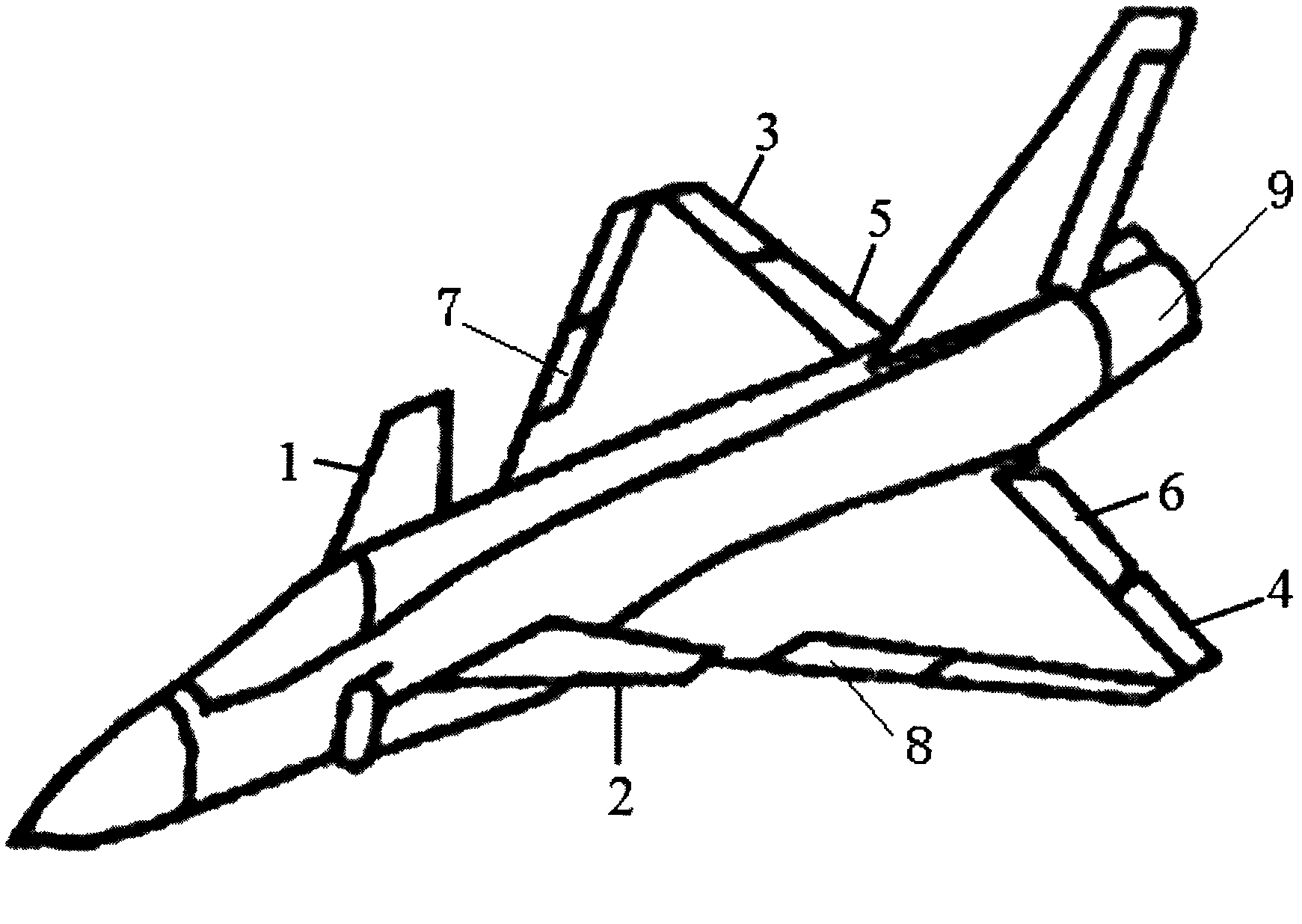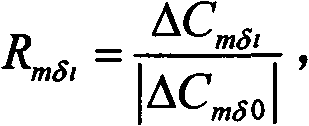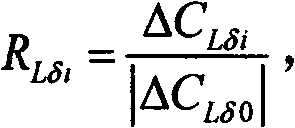Method for determining use priority of control surfaces of aircraft with multiple control surfces at take-off and landing stages
A multi-control surface, aircraft take-off technology, applied in the field of flight control, can solve the problems of affecting the aircraft, slow aircraft control response, affecting the flight performance of the aircraft, etc., and achieve the effect of reducing adverse costs and improving flight performance.
- Summary
- Abstract
- Description
- Claims
- Application Information
AI Technical Summary
Problems solved by technology
Method used
Image
Examples
Embodiment 1
[0018] Refer to attached figure 1 In this embodiment, the method of the present invention is used to determine the use priority of each control surface of a certain type of multi-control surface aircraft during takeoff and landing. In the embodiment, the control surfaces suitable for the multi-control surface aircraft to be used in the take-off and landing stages include: the right close-coupled canard 1, the left close-coupled canard 2, the right outer elevon 3, the left outer elevon 4, The right inner elevon 5, the left inner elevon 6, the right leading edge maneuverable flap 7, the left leading edge maneuverable flap 8 and the rudder, since the rudder is the only heading control surface, it does not need to be controlled The allocation process determines its deflection angle, so the control surfaces that need to be prioritized in this embodiment are the right close-coupled canard 1, the left close-coupled canard 2, the right outer elevon 3, and the left outer elevon Wing 4...
Embodiment 2
[0030] In the present embodiment, the control surface that multi-control surface aircraft is suitable for use in the take-off and landing stage is except comprising the canard in embodiment 1 (deflection angle is denoted as δ c ), elevon (deflection angle is denoted as δ e ), leading edge maneuvering flaps (deflection angle is denoted as δ le ), it also includes the thrust vector (the deflection angle of the thrust vector nozzle is denoted as δ tv )
[0031] In this embodiment, the usable control surface deflection angle range and deflection rate are shown in Table 2:
[0032] Table 2
[0033] control surface
Minimum declination
Maximum declination
Yaw angular velocity
canard
-55°
25°
±50° / s
Elevon
-25°
25°
±50° / s
leading edge motorized flap
-10°
30°
±20° / s
thrust vectoring nozzle
-25°
25°
±25° / s
[0034] In this embodiment, the reference control ...
PUM
 Login to view more
Login to view more Abstract
Description
Claims
Application Information
 Login to view more
Login to view more - R&D Engineer
- R&D Manager
- IP Professional
- Industry Leading Data Capabilities
- Powerful AI technology
- Patent DNA Extraction
Browse by: Latest US Patents, China's latest patents, Technical Efficacy Thesaurus, Application Domain, Technology Topic.
© 2024 PatSnap. All rights reserved.Legal|Privacy policy|Modern Slavery Act Transparency Statement|Sitemap



